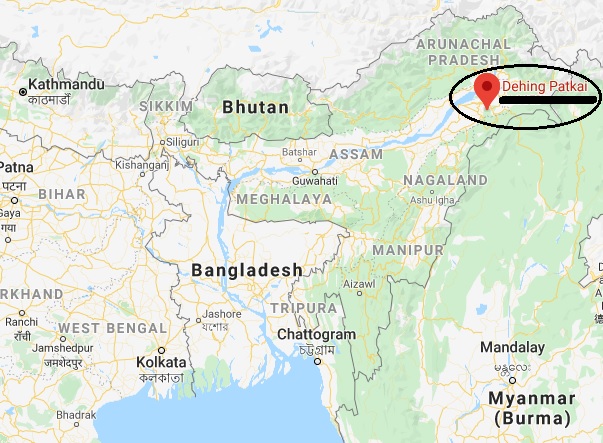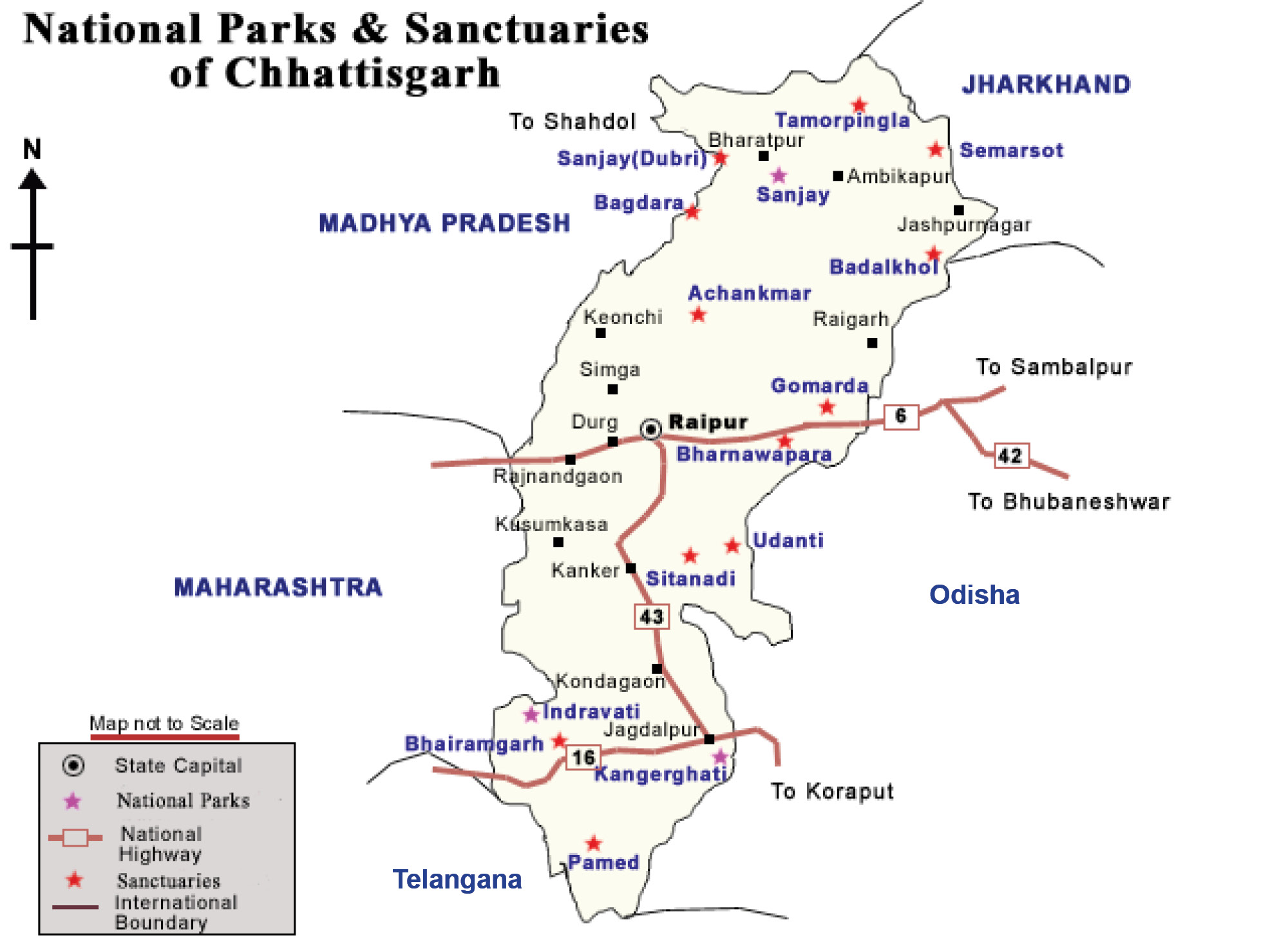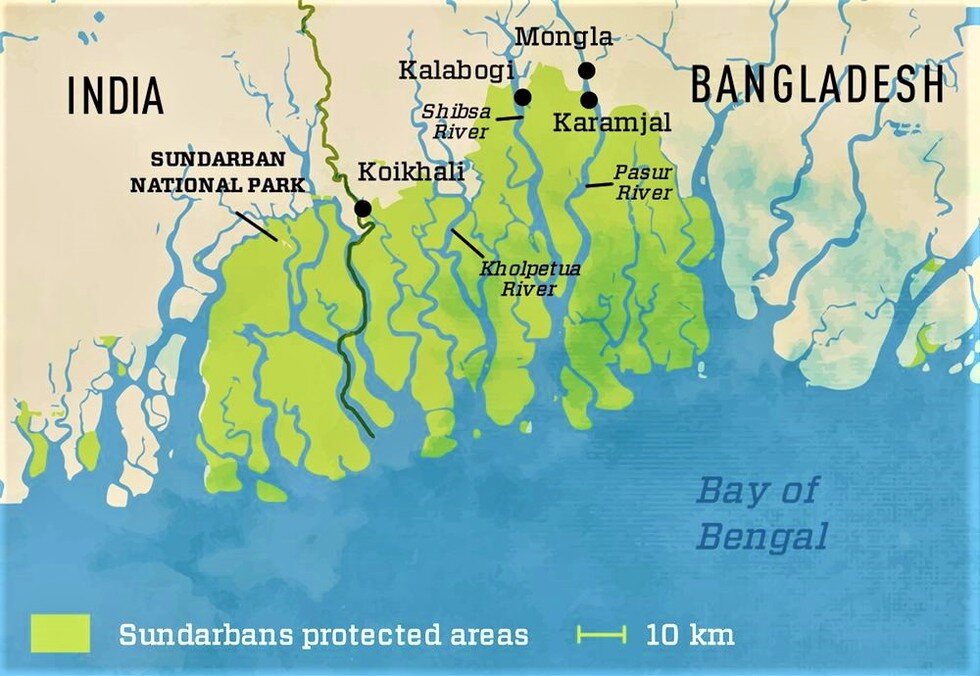Governance
Extra-judicial Killings
Why in News
Recently, Vikas Dubey, a gangster was killed by the Uttar Pradesh Police in an encounter (extra-judicial killing). However, many experts raised questions on the encounter and demanded a judicial enquiry into the matter.
Key Points
- Rights of Police:
- The police force has the right to injure or kill the criminal, for the sole and only purpose of self-defense or where it is imminently necessary for the maintenance of peace and order.
- Under Section-96 of the Indian Penal Code (IPC), every human being has the right to private defense which is a natural and an inherent right.
- Section-46 of the Criminal Procedure Code (CrPC) authorises the police to use force, extending up to the cause of death, as may be necessary to arrest the person accused of an offence punishable with death or imprisonment for life.
- The police force has the right to injure or kill the criminal, for the sole and only purpose of self-defense or where it is imminently necessary for the maintenance of peace and order.
- Reasons behind Increasing Extra-judicial Killing:
- Public Support: It emerges out of a lack of faith in the judiciary because many believe that the courts will not provide timely justice.
- The fact of getting away with cold-blooded murders is the key reason behind police getting bolder by the day and killing at will.
- Political Support: Many leaders project encounter numbers as their achievement in maintaining law and order.
- Rewards: The police forces are very often rewarded and awarded for encounters.
- The government provides promotion and cash incentives to the teams involved in the encounters.
- Ineffective Institutions: The National Human Rights Commission and the state human rights commissions have been redundant for many years.
- Though the judiciary is fully empowered to take up such cases suo-moto, however, this has now become a very rare practice.
- Hero-worshipping: The police become heroes in the society as many people see them doing the job of cleaning up the Indian society by killing the criminals.
- Many times they are also projected as heroes on the silver screen with big budget films made on them and their ‘heroic’ acts.
- Amidst all the hero-worshipping, the people, the media and even the judiciary seem to cast aside the fact that all the killings are suspect unless they have been properly investigated and the real story established.
- Public Support: It emerges out of a lack of faith in the judiciary because many believe that the courts will not provide timely justice.
- Constitutional Provision:
- The Constitution of India intended for India to be a country governed by the rule of law.
- As per the rule of law, the Constitution is the supreme power in the land and the legislative and the executive derive their authority from the constitution.
- There is a procedure prescribed by the law for criminal investigation which is embedded in the Constitution under Article 21 as the Right to Life and Personal Liberty. It is fundamental, non-derogable and is available to every person. Even the State cannot violate that right.
- Hence, it is the responsibility of the police to follow the Constitutional principles and uphold the Right to Life of every individual whether an innocent one or a criminal.
- The Constitution of India intended for India to be a country governed by the rule of law.
- Supreme Court Guidelines:
- In the PUCL vs State of Maharashtra case (2014), the SC was dealing with writ petitions questioning the genuineness of 99 encounter killings by the Mumbai Police in which 135 alleged criminals were shot dead between 1995 and 1997.
- The Supreme Court then laid down the following 16 point guidelines as the standard procedure to be followed for thorough, effective, and independent investigation in the cases of death during police encounters. Some of which include:
- Record tip-off (intelligence) regarding criminal activities pertaining to the commission of a grave criminal offence.
- Registering FIR: If in pursuance to a tip-off, the police uses firearms and this results in the death of a person, then an FIR initiating proper criminal investigation must be registered and be forwarded to the Court without any delay.
- Independent Probe: Investigation into such death must be done by an independent CID team or a police team of another police station under the supervision of a senior officer. It has to fulfil eight minimum investigation requirements like, identify the victim, recover and preserve evidentiary material, identify scene witnesses, etc.
- Inform NHRC: The NHRC or State Human Rights Commission (as the case may be) must be immediately informed of the encounter death.
- Prompt Action: Amounting to an offence under the IPC, disciplinary action must be initiated against the police officer found guilty of wrongful encounter and for the time being that officer must be suspended.
- The Court directed that these requirements/norms must be strictly observed in all cases of death and grievous injury in police encounters by treating them as a law declared under Article 141 of the Indian Constitution.
- NHRC Guidelines
- In March 1997, Justice M. N. Venkatachaliah (the then chairperson of the NHRC), asked all states and Union Territories to ensure that police follows the following set of guidelines in cases of encounter killings:
- Register FIR: When the in-charge of a Police Station receives information about the deaths in an encounter, he shall record that information in the appropriate register.
- Investigation: Received information shall be regarded as sufficient to suspect and immediate steps must be undertaken to investigate the relevant facts and circumstances leading to the death so as to ascertain, if any, offence was committed and by whom.
- Compensation: It can be granted to the dependents of the deceased when the police officers are prosecuted on the basis of the results of the investigation.
- Independent Agency: Whenever the police officers belonging to the same police station are the members of the encounter party, it is appropriate that the cases for investigation are referred to some other independent investigation agency, such as State CID.
- In 2010, NHRC extended these guidelines by including:
- Magisterial Probe: A magisterial enquiry must be held in all cases of death which occurs in the course of police action, as expeditiously as possible (preferably within three months).
- Reporting to Commission: All cases of deaths in police action in the states shall be preliminary reported to the Commission by the Senior Superintendent of Police/Superintendent of Police of the District within 48 hours of such death.
- A second report must be sent in all cases to the Commission within three months providing information like a post mortem report, findings of the magisterial enquiry/enquiry by senior officers, etc.
- In March 1997, Justice M. N. Venkatachaliah (the then chairperson of the NHRC), asked all states and Union Territories to ensure that police follows the following set of guidelines in cases of encounter killings:
Way Forward
- Encounter killings must be investigated independently as they affect the credibility of rule of law. There is a need to ensure that there exists a rule of law in the society that needs to be adhered to by every State authority and the masses.
- Ensuring proper physical custody of the accused in order to prevent any attack by them on the police personnel.
- Further, there is a dire need for complete overhauling of the criminal justice system and bringing out required police reforms.
- Standard guidelines need to be laid down to better train the police personnel and equip them with all relevant skills so that they can effectively tackle every dreadful situation.
- Human rights angles need to be kept in the mind while dealing with arrested individuals/persons.
Geography
World Population Day
Why in News
Every year, 11th July is celebrated as the World Population Day.
Key Points
- Theme for 2020: How to safeguard the health and rights of women and girls amid the Covid-19 pandemic.
- Various reports have shown that domestic violence has increased globally amid the lockdown.
- The National Commission for Women in India reported a huge rise in the number of complaints related to domestic violence.
- A study by the United Nations Population Fund (UNFPA) says, "47 million women in low- and middle-income countries may not be able to access modern contraceptives" if the lockdown-like disruptions continue for six months.
- This could result in millions of unintended pregnancies and gender-based violence.
- Women are also hit harder economically due to the Covid-19 crisis.
- Around 60% of women across the world earn their livelihood by working in the informal sector, according to the report.
- Various reports have shown that domestic violence has increased globally amid the lockdown.
- Background:
- In 1989, the United Nations Development Programme (UNDP) recommended that 11th July be observed by the international community as World Population Day, a day to focus attention on the urgency and importance of population issues.
- UNDP was inspired by the public interest and awareness that was created by "Five Billion Day" on 11th July 1987 when the world's population reached 5 billion.
- The United Nations Population Fund (UNFPA) seeks to create awareness about the issues associated with the population.
- India’s Concerns:
- India has just 2% of the world’s landmass and 16% of the global population. It is the second-most populous country in the world with an estimated population of around 1.37 billion by 2019.
- It has been reported that India will soon surpass China’s population.
- Mismatch in birth and death rate resulted in faster growth of population in the past few decades.
- Poverty and illiteracy contribute immensely to the population explosion.
- Children in rural areas are considered as assets, who will take care of parents at old age, also more children mean more earnings.
- The level of female education has a direct impact on fertility, as it is evidenced that the fertility rate of illiterate women tends to be higher than those who are literate.
- Lack of education prevents women from having full knowledge about the use of contraceptives, of the consequences of frequent childbirth.
- Although the Total Fertility Rate (TFR) is declining in India, poorer states like Bihar (3.2), Uttar Pradesh (3.0), Rajasthan (2.6) and Jharkhand (2.5) still have TFRs above the national average of 2.2.
- Total Fertility Rate (TFR) is the average number of children born to women during their reproductive years. For the population to remain stable, an overall total fertility rate of 2.1 is needed.
- High youth unemployment in India is turning demographic dividend into a demographic disaster for India.
- This youth potential is often referred to as the ‘demographic dividend’ which means that if the youth available in the country are equipped with quality education and skills training, then they will not only get suitable employment but can also contribute effectively towards the economic development of the country.
- India has just 2% of the world’s landmass and 16% of the global population. It is the second-most populous country in the world with an estimated population of around 1.37 billion by 2019.
United Nations Population Fund
- It is a subsidiary organ of the UN General Assembly and works as a sexual and reproductive health agency.
- It was established as a trust fund in 1967 and began operations in 1969.
- In 1987, it was officially renamed the United Nations Population Fund but the original abbreviation, ‘UNFPA’ for the United Nations Fund for Population Activities was retained.
- UNFPA works directly to tackle Sustainable Development Goals on health (SDG3), education (SDG4) and gender equality (SDG5).
- Recently, the UNPFA released the State of the World Population 2020 report.
Way Forward
- Family planning is an effective tool to ensure a stable rise in the population. The government at all levels- Union, State and Local, citizens, civil societies as well as the businesses must take the onus to promote awareness and advocate the sexual and reproductive rights of women and encourage the use of contraception.
- There is a need for well-researched planning and implementation on how to harness the population growth for the maximum economic benefit of the society and country.
- In order to have a better future for all on a healthy planet, attainment of the Sustainable Development Goals (SDGs) related to poverty, gender equality, economic growth among others is critical.
Social Justice
Faulty Education Guidelines in Rajasthan
Why in News
Recently, the National Commission for Protection of Child Rights (NCPCR) has criticised the Rajasthan government for its new guidelines on elementary education.
- The new guidelines violate the Right to Education (RTE) Act, 2009.
- They deny children from economically weaker sections the right to free education in nursery classes.
Key Points
- Background:
- Rajasthan’s Department of School Education issued guidelines stating that admissions to private schools under the RTE Act, 2009 for the 2020-21 academic year would take place only from class 1 or above, excluding pre-schoolers (children in the nursery).
- The guidelines recommend the age of admission to be “5 years or above but less than 7 years as of 31st March 2020”.
- Violations:
- These guidelines are violative of the RTE Act 2009 which states that at least 25% strength of a class in private schools should consist of children belonging to weaker sections and disadvantaged groups.
- The guidelines only allow children less than 7 years but the RTE Act allows “male or female child of the age of six to fourteen years” for admission.
- NCPCR’s Reaction:
- It recommended the state to re-examine the guidelines in light of the Act and make necessary changes so that there is no loss of education to children.
National Commission for Protection of Child Rights
- It is a statutory body set up in March 2007 under the Commissions for Protection of Child Rights (CPCR) Act, 2005.
- It is under the administrative control of the Ministry of Women and Child Development.
- Mandate:
- To ensure that all laws, policies, programmes and administrative mechanisms are in consonance with the child rights perspective as enshrined in the Constitution of India and also the United Nations Convention on the Rights of the Child, 1989.
- Powers:
- It monitors the implementation of Protection of Children from Sexual Offences (POCSO) Act, 2012.
- It can inquire into complaints about violation of the law and can summon an individual, demand evidence, seek a magisterial enquiry.
Right to Education
- Constitutional Background:
- Part IV of Indian Constitution, Article 45 and Article 39 (f) of Directive Principles of State Policy (DPSP), has a provision for state-funded as well as equitable and accessible education.
- The first official document on the Right to Education was the Ramamurti Committee Report in 1990.
- In Unnikrishnan JP vs State of Andhra Pradesh & Others, 1993 the Supreme Court held that education is a fundamental right flowing from Article 21.
- Tapas Majumdar Committee (1999) was set up, which encompassed the insertion of Article 21-A.
- The 86th amendment to the constitution of India in 2002, provided Right to Education as a fundamental right in Part III of the Constitution.
- It inserted Article 21-A which made Right to Education a fundamental right for children between 6-14 years.
- It provided for follow-up legislation for the Right to Education Bill 2008 which became an Act in 2009.
- Feature of RTE Act, 2009:
- It aims to provide primary education to all children aged 6 to 14 years and enforces education as a Fundamental Right (Article 21).
- The act mandates 25% reservation for disadvantaged sections of the society where disadvantaged groups include:
- Scheduled Castes (SCs) and Scheduled Tribes (STs).
- Socially Backward Class.
- Differently-abled.
- Children Related Provisions:
- It makes provisions for a non-admitted child to be admitted to an age-appropriate class.
- It had a clause for ‘No Detention Policy’ which has been removed under the Right of Children to Free and Compulsory Education (Amendment) Act, 2019.
- It focuses on making the child free of fear, trauma and anxiety through a system of child-friendly and child-centred learning.
- Teachers Related Provisions:
- It provides for prohibition of deployment of teachers for non-educational work, other than decennial census, elections to a local authority, state legislatures and parliament and disaster relief.
- It provides for the appointment of teachers with the requisite entry and academic qualifications.
- It also talks about the sharing of financial and other responsibilities between the Central and State Governments.
- It lays down the norms and standards related to:
- Pupil-Teacher Ratios (PTRs).
- Buildings and infrastructure.
- School-working days.
- Teacher-working hours.
- It prohibits:
- Physical punishment and mental harassment.
- Screening procedures for admission of children.
- Capitation fee.
- Private tuition by teachers.
- Running of schools without recognition.
Way Forward
- It has been more than ten years since the implementation of the RTE Act, but it can be seen that it still has a long way to go to be called successful in its purpose. Creation of a conducive atmosphere and supply of resources would pave the way for a better future for individuals as well as the nation as a whole.
Governance
Draft Aids to Navigation Bill 2020
Why in News
Recently, the Ministry of Shipping has issued the draft of the Aids to Navigation Bill, 2020 for suggestions from the stakeholders and general public.
- It aims to regulate state-of-the-art technologies of marine navigation which was earlier used to tangle in statutory provisions of Lighthouse Act, 1927.
- A navigational aid is any kind of marker which aids the traveler in navigation, usually nautical or aviation travel. Common types of such aids include lighthouses, buoys, fog signals, and day beacons.
Key Points
- Replacement of Lighthouse Act: It is proposed to replace the nine decades old colonial Lighthouse Act, 1927, to incorporate the global best practices, technological developments and India's International obligations in the field of aids to marine navigation.
- It also provides for identification and development of heritage lighthouses.
- The Lighthouse Act is an act relating to the provision, maintenance and control of lighthouses. It was enacted by the Brtishers in 1927.
- Empowerment of DGLL: It provides for empowering Directorate General of Lighthouses and Lightships (DGLL) with additional power and functions such as vessel traffic service, wreck flagging, training and certification, implementation of other obligations under International Conventions, where India is a signatory.
- Offences: It comprises a new schedule of offences, along with commensurate penalties for obstructing and damaging the aids to navigation, and non-compliance with directives issued by the Central Government and other bodies.
- Aids to Navigation Cess: Every ship arriving at or departing from any port in India will have to pay cess at rates notified by the Central government.
- Currently, the Central government, as per the provisions of the Lighthouse Act, levies light dues on all the foreign going ships arriving at or departing from any port in India.
- Light dues are the charges levied on ships for the maintenance of lighthouses and other aids to navigation.
- Significance
- Proactive Approach: The draft bill is part of the proactive approach adopted by the Ministry of Shipping by repealing archaic colonial laws and replacing it with modern and contemporary needs of the maritime industry.
- Misinterpretation of the Lighthouse Act: It is often seen that the Act is misinterpreted by the custom department under the Customs Act of 1962 and has led to incorrect collection of a huge sum of light dues thereby putting financial & economic burden upon citizens.
- Modern Technologies: The role of authorities regulating and operating maritime navigation has changed drastically along with the advent improved aids to maritime navigation.
- The new law encompasses a major shift from lighthouses to modern aids of navigation.
- Strengthening of the Provisions: The suggestions from the public and stakeholders will strengthen the provisions of the legislation. This is in line with the vision for augmenting people’s participation and transparency in the governance.
Directorate General of Lighthouses and Lightships
- It is a subordinate office under the Ministry of Shipping to provide general aids to marine navigation along the Indian coast.
- Mission: To help the mariners and local fisherman to navigate safely in the Indian waters.
- Headquarters: Noida, Uttar Pradesh
Governance
India Cycles4Change Challenge
Why in News
The Smart Cities Mission (under the Ministry of Housing and Urban Affairs) has opened the registration for India Cycles4Change Challenge.
- India Cycles4Change Challenge was launched in June 2020.
Key Points
- Aim: To inspire Indian cities to implement quick cycling-friendly interventions in the wake of Covid-19 with the support of their citizens and assistance from experts.
- Cities would be encouraged to create extensive cycling-networks using low-cost methods like pop-up cycle lanes, non-motorised zones and set up community-led cycle rental schemes.
- In the longer term, the Smart Cities Mission encourages cities to convert temporary interventions into permanent.
- Coverage:
- The Challenge is open to all cities under the Smart Cities Mission, capital cities of States/UTs, and all cities with a population of more than 5 lakh population.
- All eligible cities can register and submit their applications on the portal (https://smartnet.niua.org/indiacyclechallenge/).
- The portal also has a registration form for citizens, experts, and Civil Society Organizations (CSOs) to express their interest in collaborating with the city for the project.
- Functioning: The Challenge will run in two stages.
- Stage One will run until October 2020 where cities will focus on piloting quick interventions to promote cycling and developing a scale-up strategy.
- In October 2020, 11 cities will be shortlisted and will receive Rs. 1 Crore award and guidance from national and international experts to further scale-up the initiatives in Stage Two, which will be held until May 2021.
- Knowledge Partner: The India Programme of the Institute for Transportation and Development Policy (ITDP) will be the knowledge partner of the Smart Cities Mission to assist the Mission in conducting this challenge and guiding cities in developing and implementing their proposals.
- Need of Such an Initiative:
- The need for personalized forms of transport is expected to increase as a response to Covid-19. Some Indian cities have already started working towards promoting cycling as a response to the pandemic.
- Kolkata has proposed a dedicated cycle corridor by reclaiming parking spaces.
- In Guwahati, the Green lane Foundation, with the support of the Bicycle Mayor of Guwahati and Pedal for a Change, is conducting a survey for citizens to vote for the best routes for bicycle lanes in the city.
- A recent survey by the ITDP India Programme shows that cycling would increase by 50-65% as cities come out of lockdown.
- Cities around the world are leveraging the opportunity to expand their cycling networks and public bicycle-sharing systems.
- Further, increasing cycling can help cities in a green economic recovery.
- Investments in cycling infrastructure have economic benefits of up to 5.5 times the initial investment.
- Cycling for short distances can result in an annual benefit of Rs. 1.8 trillion to the Indian economy.
- The need for personalized forms of transport is expected to increase as a response to Covid-19. Some Indian cities have already started working towards promoting cycling as a response to the pandemic.
Institute for Transportation and Development Policy
- It was founded in 1985 and is headquartered in New York, USA.
- It has grown from a small band of cycling activists to a leading organization in the fight to curb climate change, and transform streets for a better quality of life in cities.
- It works in all types of cities on five continents, with offices in China, Brazil, India, Indonesia, Kenya, Mexico and the United States.
- In India, the Urban Works Institute—a public charitable trust registered in the country—is ITDP’s network partner that manages the ITDP India Program.
- The India Program works with cities to design and implement sustainable transport projects, and provide policy solutions to enhance social inclusion, reduce dependency on limited resources, improve road safety, and reduce carbon emissions.
Governance
ASEEM Portal
Why in News
The Ministry of Skill Development and Entrepreneurship (MSDE) has launched ‘Aatamanirbhar Skilled Employee Employer Mapping (ASEEM)’ portal to help skilled people find sustainable livelihood opportunities.
- The Portal is expected to improve the information flow and bridge the demand-supply gap in the skilled workforce market.
Key Points
- Developed and Managed By: National Skill Development Corporation (NSDC) in collaboration with Bengaluru-based company ‘Betterplace’.
- Artificial Intelligence (AI) Based Platform:
- It will provide real-time data analytics about the demand and supply patterns including - industry requirements, skill gap analysis, demand per district/ state/cluster, key workforce suppliers, key consumers, migration patterns and multiple potential career prospects for candidates.
- It will enable policymakers to take a more objective view of various sectors in the economy.
- Driven by Prime Minister’s assertion of ‘India as a talent powerhouse’ at the India Global Week 2020 Summit, it will further re-engineer the vocational training landscape in the country ensuring a skilling, up-skilling and reskilling in a more organised set up.
- Functioning: Also available as an application (app), it consists of three IT based interfaces:
- Employer Portal: Employer onboarding, demand aggregation, candidate selection.
- Dashboard: Reports, trends, analytics, and highlight gaps.
- Candidate Application: Create & track candidate profile, share job suggestions.
- Benefits:
- To Skilled Workforce:
- It will have provision for registration and data upload for workers across job roles, sectors and geographies.
- It will help in strengthening industry-relevant skills and explore emerging job opportunities especially in the post Covid era.
- Candidate data coming to Skill India Portal from various state and central skilling schemes will be integrated including that from Pradhan Mantri Kaushal Vikas Yojana (PMKVY), Fee-based Programs, National Urban Livelihoods Mission, Deen Dayal Upadhyaya Grameen Kaushalya Yojana, etc.
- To Migrants:
- Database of labour migrants in Indian states and overseas citizens, who returned to India under the Vande Bharat Mission and filled SWADES Skill Card, has been integrated with the ASEEM portal.
- To Skilled Workforce:
- To Employers: They will be able to assess the availability of a skilled workforce and formulate their hiring plans.
National Skill Development Corporation
- NSDC is a not-for-profit public limited company incorporated in 2008 under section 25 of the Companies Act, 1956 (corresponding to section 8 of the Companies Act, 2013).
- It was set up by the Ministry of Finance as a Public Private Partnership (PPP) model.
- The Government of India through the Ministry of Skill Development & Entrepreneurship (MSDE) holds 49% of the share capital of NSDC, while the private sector has the balance 51% of the share capital.
- It aims to promote skill development by catalyzing creation of large, quality and for-profit vocational institutions.
- Its mandate is also to enable a support system which focuses on quality assurance, information systems and train the trainer academies either directly or through partnerships.
- Skill India Portal is an initiative by the NSDC.
Biodiversity & Environment
Dehing Patkai Wildlife Sanctuary
Why in News
The Assam government has decided to upgrade Dehing Patkai Wildlife Sanctuary into a National Park.
- The announcement comes just months after the National Board of Wildlife (NBWL) gave conditional clearance to a coal mining project by Coal India Limited (CIL) in the Dehing Patkai Elephant Reserve.
Key Points
- As a national park, its importance will increase and new rules will bring increased vigilance to the area. While the first proposal to accord national park status to the region dates back to 1995, Dehing Patkai was declared a wildlife sanctuary in 2004.
- Description: Dehing Patkai Wildlife Sanctuary is located within the larger Dehing Patkai Elephant Reserve, which spreads across the coal- and oil-rich districts of Upper Assam (Dibrugarh and Tinsukia districts).
- The Dehing Patkai Wildlife Sanctuary is also known as the Jeypore Rainforest.
- Dehing is the name of the river that flows through this forest and Patkai is the hill at the foot of which the sanctuary lies.
- The oldest refinery of Asia in Digboi and ‘open cast’ coal mining at Lido are located near the sanctuary.
- It is famous for Assam Valley Tropical Wet Evergreen Forests bordering Arunachal Pradesh.
- Fauna: Rare fauna found in the region include Chinese pangolin, flying fox, wild pig, sambar, barking deer, gaur, serow and Malayan giant squirrels.
- It is the only sanctuary in India which is home to seven different species of wild cats - tiger, leopard, clouded leopard, leopard cat, golden cat, jungle cat and marbled cat.
- Assamese macaque, a primate found in the forest, is in the red list of Near Threatened species.
- It has the highest concentration of the rare endangered White Winged Wood Duck.
- Flora: Dehing Patkai is a deciduous rainforest interspersed with semi-evergreen and lush green flora.
- Sixth National Park: Post upgradation, Dehing Patkai will be the sixth national park in Assam — the other five being Kaziranga, Nameri, Manas, Dibru-Saikhowa and Rajiv Gandhi Orang National Park.
| National Parks |
Wildlife Sanctuaries |
|
|
|
|
|
|
|
|
|
|
|
|
|
|
|
|
Governance
Snakebite Deaths in India
Why in News
Recently, a study conducted by the Centre for Global Health Research (CGHR) at the University of Toronto (Canada), with Indian and United Kingdom as partners, has revealed that India recorded 1.2 million snakebite deaths from 2000 to 2019 (i.e. an average of annual 58,000 deaths).
- Earlier, in the largest ever such survey published in 2011 titled ‘Snakebite Mortality in India: A Nationally Representative Mortality Survey’, estimated 46,000 annual snakebite deaths in India.
Key Points
- Data Analysis:
- Half of all the snakebite deaths occurred during the monsoon period from June to September.
- Around 70% of deaths occurred in limited, low altitude, rural areas of the following States — Bihar, Jharkhand, Madhya Pradesh, Odisha, Uttar Pradesh, Andhra Pradesh, Telangana, Rajasthan and Gujarat.
- The numbers for annual snakebite deaths were highest in the states of Uttar Pradesh, Andhra Pradesh, and Bihar.
- The snakebite deaths occurred mostly in rural areas (97%), were more common in males (59%) than females (41%), and peaked at ages 15-29 years (25%).
- The overall lifetime risk of being killed by snakebite is about 1 in 250, but in some areas, the lifetime risk reaches 1 in 100.
- It also indicated that most of the envenomation (the process by which venom is injected by the bite or sting of a venomous animal) was by Russell’s vipers followed by Kraits and Cobras.
- Solutions:
- Immediate Action: As India has tremendous snakebite burden and the World Health Organization (WHO) recognises snakebite as a top-priority Neglected Tropical Disease (NTD), there is a need for immediate action.
- Snake Safe Harvest Practices: The primary victims of snakebites are rural farmers and their families. Targeting certain areas and educating people with simple methods such as ‘snake-safe’ harvest practices — using rubber boots and gloves, mosquito nets and rechargeable torches (or mobile phone flashlights) — could reduce the risk of snakebites.
- Snake Species Database: Habitat details, clear photographs and geographical distribution in the form of snake database would help in the identification of the venomous and nonvenomous snake species.
- Anti-Venom: India has sufficient capacity to manufacture large volumes of anti-venom. However, Indian anti-venoms neutralise venom from only spectacled cobra, common krait, Russell’s viper and saw-scaled viper, whereas there are 12 other snake species causing fatal bites that are not covered by current anti-venoms.
- Antivenoms are the medicines produced from antibodies made by animals to injected venoms.
- It is given to stop snake venom from binding to tissues and causing serious blood, tissue, or nervous system problems.
- Antivenoms are the medicines produced from antibodies made by animals to injected venoms.
Biodiversity & Environment
Ophiocordyceps Nutans Fungi
Why in News
Recently, researchers have found Ophiocordyceps nutans (fungi) for the first time in central India, while setting out on a plant survey at the Kanger Valley National Park in Bastar, Chhattisgarh.
- Earlier, these have been reported in India only from the Western Ghats.
Key Points
- Ophiocordyceps nutans host on a specific insect, Halyomorpha halys.
- Halyomorpha halys is commonly known as the stink bug and is a pest to forest trees and agricultural crops.
- The stink bug is known to damage the flower and fruits of soybean, green beans, apple, pear, etc.
- Mechanism:

- The fungi infect the insect when alive and develop fungal mycelium (the vegetative part of a fungus) inside its thorax (chest).
- The spores (single-celled reproductive units) sprout out from between the insect’s thorax and head, killing the insect but it continues to take nutrition from the dead body.
- The fungi are very host-specific, so the spores travel and infect stink bugs only.
- Importance:
- Studies have shown that these fungi can be used as a biological pest control agent against the stink bugs.
- Exploring these fungi as a pesticide will help reduce the harmful effect of chemicals in fields.
- Several species of the Ophiocordyceps fungi have medicinal properties.
- Reports show that China has been traditionally using it.
- In the Western Ghats, the local people use these fungi as an immune stimulator.
- These are rich in biologically active metabolites, vitamin C, phenolic compounds (disinfectant in household cleaners), and also have anti-inflammatory and antioxidant properties.
- Scientists claim that it contains a component called ‘cordycepin’ which has anti-cancer properties.
- Studies have shown that these fungi can be used as a biological pest control agent against the stink bugs.
Kanger Valley National Park
- It derives its name from the Kanger River, which flows centrally from northwest to southeast direction. Kanger River is among one of the very few perennial rivers of Bastar.
- Kanger Valley got the status of a national park in 1982.
- With a total area of 200 sq. km., the park is a typical mixed humid deciduous type of forest, in which the Sal, Saugaun, teak and bamboo trees are available in abundance.
- The most popular species in this area is the state bird of Chattisgarh, Bastar Hill Myna which is capable of emulating the human voices. The forest is home to other migrant and resident birds as well.
- The park is home to three exceptional caves, Kutumbasar, Kailash and Dandak, famous for their geological structures of stalagmites and stalactites. It is also known for the presence of underground limestone caves.
Important Facts For Prelims
National Fish Farmers Day 2020
Why in News
Recently, a webinar was hosted by the Department of Fisheries under the Ministry of Fisheries, Animal Husbandry and Dairying in association with the National Fisheries Development Board (NFDB) on the occasion of National Fish Farmers Day, which is celebrated on 10th July every year.
Key Points
- National Fish Farmers Day is celebrated in the memory of scientists Dr K. H. Alikunhi and Dr H. L. Chaudhury.
- Both of them successfully demonstrated Hypophysation (technology of induced breeding) in Indian Major Carps (common name for several species of fish) on 10th July 1957.
- Aim:
- To recognise the accomplishments and contribution of fish farmers, aquapreneurs (entrepreneurs in the water sector) and fisherfolks in the growth of the fisheries sector in the country.
- To draw attention to changing the way the country manages fisheries resources to ensure sustainable stocks and healthy ecosystems.
- Related Initiative:
- In order to make the Blue Revolution successful, the Pradhan Mantri Matsya Sampada Yojana (PMMSY) has been launched.
- Fish Cryobanks:
- NFDB and the National Bureau of Fish Genetic Resources (NBFGR) will establish fish cryobanks in different parts of the country.
- The Cryomilt technology may be helpful in the establishment of fish cryobanks, which will provide good quality of fish sperm in hatcheries at any time.
- This would be the first time in the world when Fish Cryobanks will be established, enhancing fish production and increasing prosperity among the fish farmers.
National Fisheries Development Board
- It was established in 2006 as an autonomous organization under the administrative control of the Ministry of Agriculture and Farmers Welfare.
- Now, it works under the Ministry of Fisheries, Animal Husbandry and Dairying.
- Mandate:
- To enhance fish production and productivity in the country and to coordinate fishery development in an integrated and holistic manner.
National Bureau of Fish Genetic Resources
- It was established in December 1983, under the aegis of Indian Council of Agricultural Research (ICAR).
- Mandate:
- Exploration, characterization and cataloguing of fish genetic resources.
- Maintenance and preservation of fish genetic resources for conservation and utilization of prioritized species.
- Evaluation of indigenous and exotic germplasm including risk assessment and fish health.
Important Facts For Prelims
Rare Orchids in India
Why in News
Recently, two rare orchid species i.e. Tiger orchids (Grammatophyllum speciosum) and Ground orchids (Eulophia obtusa) have been found to be blooming in different parts of the country after a gap of many years.
Key Points
- Tiger Orchid:
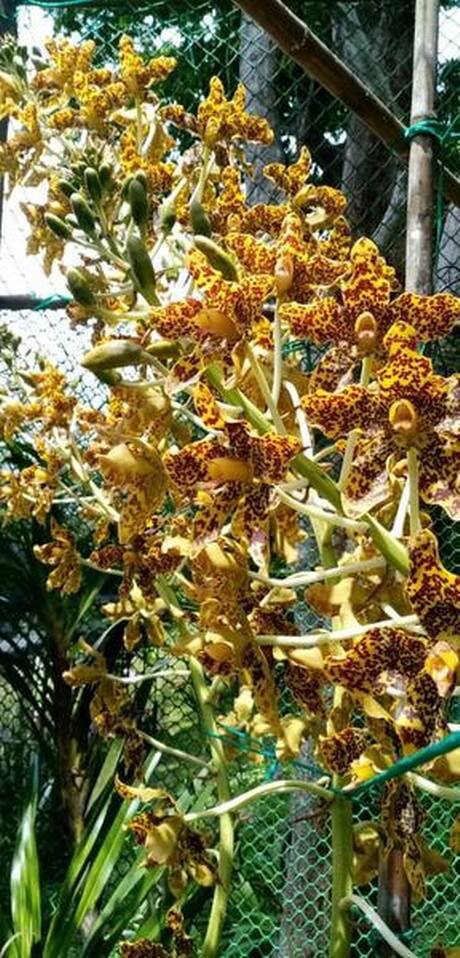
- Scientific Name: Grammatophyllum speciosum
- Characteristics: It has large and resplendent flowers which resemble the tiger skin.
- It flowers in alternate years and remains in bloom for about a month.
- Geographical Distribution: These epiphytic plants are not native to India, and are endemic to southeast Asia i.e.Indonesia and Philippines.
- An epiphyte grows on the surface of a plant and derives its moisture and nutrients from the air, rain, water or from debris accumulating around it.
- It is found to be in full bloom at the Jawaharlal Nehru Tropical Botanic Garden and Research Institute (JNTBGRI) Kerala, where it was introduced in the 1990s.
- Ground Orchid:
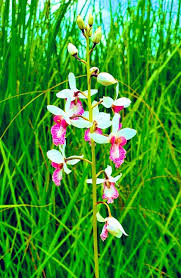
- Scientific Name: Eulophia obtusa
- Rediscovery: It has been rediscovered in Dudhwa Tiger Reserve, Uttar Pradesh after 118 years.
- It was last recorded in Pilibhit, Uttar Pradesh in 1902.
- Geographical Distribution: The species is originally from Uttarakhand.
- It was collected by botanists from Gangetic plains but there have been no sightings in the past 100 years. In 2008, the plant species was sighted in Bangladesh for the first time.
- Characteristics: It has white flowers and bright pink hues.
- Protection Status: Listed as “critically endangered” in the International Union for Conservation of Nature (IUCN) Red List of endangered species.
Important Facts For Prelims
Bon Bibi: Sundarban
Why in News
A centuries-old folk theatre form and the worship of a forest goddess i.e. Bon Bibi has helped the natives of the Sundarban survive by understanding the power of nature and the limits of human needs.
Key Points
- Bon Bibi: Bon Bibi is a deity of the forest and the central character of Bon Bibir Palagaan, a musical drama unique to the Sundarbans.
- Shrines to Bon Bibi and her twin brother Shah Jongoli dot the landscape of the Sundarbans.
- The followers of Bon Bibi are fishermen, crab-collectors and honey-gatherers who live in the mangroves with wild animals such as tigers and crocodiles to earn a livelihood.
- They believe that only Bon Bibi protects them when they enter the forest and survive in tiger dominated areas.
- Bon Bibir Palagaan: People express their belief in Bon Bibi through Bon Bibir Palagaan, a dramatic storytelling form that is enacted throughout the island.
- Traditionally, the performances are held near Bon Bibi temples or villages bordering the forests.
- Significance:
- An unwritten code believed to be given by the deity prohibits islanders from carrying guns or weapons into the forest.
- They must enter the forest only if they absolutely need to earn a livelihood and not take more — honey or crabs, fish or prawns — than they need.
- They must not pollute the forest in any way, by smoking, defecating or washing utensils.
- According to a local lore, poachers, pirates and those who disobey Bon Bibi are attacked by tigers as punishment.
Sundarbans
- The Sundarbans is a mangrove area in the delta formed by the confluence of the Ganges, Brahmaputra and Meghna Rivers in the Bay of Bengal.
- It spans from the Hooghly River in India's state of West Bengal to the Baleswar River in Bangladesh.
- The active delta region is among the largest in the world, measuring about 40,000 sq km.
- India's Sundarban was declared as the UNESCO'S World Heritage site in 1987.
- Sunderban Wetland has been accorded the status of ‘Wetland of International Importance’ under Ramsar Convention in 2019.
- Sunderbans Biosphere Reserve (National Park) is an Important Bird Area under Birdlife International.
- The area is known for many rare and globally threatened wildlife species such as the estuarine crocodile (Crocodylus porosus), royal Bengal tiger (Panthera tigris), Water monitor lizard (Varanus salvator), gangetic dolphin (Platanista gangetica), and olive ridley turtle (Lepidochelys olivacea).
- Sajnekhali Bird Sanctuary is a part of Sundarban and is famous for the sight of rare birds.
Important Facts For Prelims
IAF Gets Apache Helicopters
Why in News
Recently, Boeing has handed over the last of the five AH-64E Apache attack helicopters to the Indian Air Force (IAF).
- The handover was slightly delayed due to the Covid-19 induced lockdown.
- Earlier, Boeing handed over the last five of the 15 CH-47F(I) Chinook heavy-lift helicopters to the IAF as well.
Key Points
- India contracted 22 Apache helicopters and 15 Chinook helicopters from Boeing through the Foreign Military Sales programme of the USA government in September 2015 under a USD 3 billion deal.
- The addition of both these helicopters is a significant step towards modernization of IAF’s helicopter fleet.
- AH-64E Apache Attack Helicopter:

- These are all-weather capable, easily maintainable helicopters and have high agility and survivability against battle damage.
- Capabilities:
- Carry out precision attacks at standoff ranges and operate in hostile airspace with threats from the ground.
- Transmit and receive battlefield pictures through data uplinking and networking.
- Shoot fire and forget anti-tank guided missiles, air to air missiles, rockets while providing the versatility to helicopter in network-centric aerial warfare.
- Carries fire control radar, which has a 360° coverage and nose-mounted sensor suite for target acquisition and night vision systems.
- Boeing’s joint venture in Hyderabad, Tata Boeing Aerospace Limited, has been producing aero-structures for the AH-64 Apache helicopter for both the USA Army and international customers.
- 15 CH-47F(I) Chinook Heavy-lift Helicopters:

- It is capable of airlifting diverse military and nonmilitary loads into remote locations.
- It has a fully integrated digital cockpit management system, advanced cargo handling capabilities and electronic warfare suite that complement the aircraft’s performance.
- The helicopter has been customized to suit IAF’s future requirements and capability roadmap.
- These are deployed in the Northern and Eastern regions of India.
- Boeing’s suppliers in India are manufacturing critical systems and components for the Chinooks, including the crown and tail cone assembly by the Tata Advanced Systems and the ramp and aft pylon by Dynamatic Technologies.
Important Facts For Prelims
Swabhiman Anchal
Why in News
Recently, a passenger bus service was started for the first time after India’s Independence in Swabhiman Anchal region (formerly known as the cut-off area) in Odisha’s Malkangiri district.
Key Points
- The bus service was able to start after the construction of the Gurupriya Bridge in 2018, which connected Swabhiman Anchal with the rest of the State.
- Till now, motor launches and boats were used to be the only mode of communication to reach ferry points and from there people were taking country boats to reach villages.
- People were even using horses to travel in the remote parts of Swabhiman Anchal.
- Swabhiman Anchal is situated along the Odisha-Andhra Pradesh border, and had long been a stronghold of left-wing extremists.
- The region is covered by water from three sides and another side by inhospitable terrain.
- Balimela reservoir is also situated in the region.
- Recently, a new police station also started functioning in Jodambo (a gram panchayat in Swabhiman Anchal).
Important Facts For Prelims
No Merger of CBDT and CBIC
Why in News
Recently, the Central government has clarified that it has no proposal to merge the Central Board of Direct Taxes (CBDT) and Central Board of Indirect Taxes and Customs (CBIC).
- The clarification came after the news appeared in certain sections of media that the government was considering to merge the two boards.
Key Points
- The merger proposal was one of the recommendations of the Tax Administrative Reforms Commission (TARC) under the chair of Parthasarathi Shome that submitted its report in 2014.
- However, the proposal was not accepted by the government.
- CBDT and CBIC have been created under the Central Boards of Revenue Act, 1963. Both Boards are part of the Department of Revenue under the Ministry of Finance.
- Central Board of Direct Taxes (CBDT):
- It provides inputs for policy and planning of direct taxes in India and is also responsible for the administration of direct tax laws through the Income Tax Department.
- Direct Taxes include income tax, corporation tax etc.
- Central Board of Indirect Taxes and Customs (CBIC):
- The Central Board of Excise and Customs (CBEC) was renamed as the Central Board of Indirect Taxes and Customs (CBIC) in 2018 after the roll out of Goods and Services Tax (GST).
- It deals with the tasks of formulation of policy concerning levy and collection of customs, central excise duties, Central Goods & Services Tax (CGST) and Integrated GST (IGST).

